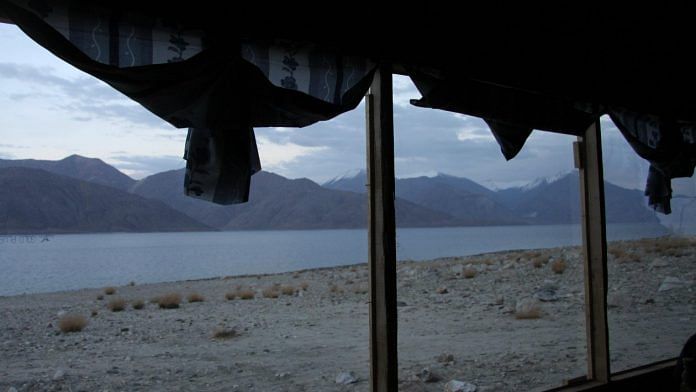
New Delhi: Nearly nine months after India and China got embroiled in their worst border tensions since the 1962 war, both sides began a phased disengagement from the southern and northern banks of the Pangong Tso in Ladakh Wednesday.
The news first emerged when Senior Colonel Wu Qian, spokesperson for the Chinese Ministry of National Defence, issued a written statement, saying: “The Chinese and Indian frontline troops at the southern and northern bank of the Pangong Tso Lake start synchronised and organised disengagement from 10 February… This move is in accordance with the consensus reached by both sides at the 9th round of China-India corps commander-level meeting.”
While India has not yet reacted officially to this, sources in the defence and security establishment said that disengagement steps have been initiated, and Defence Minister Rajnath Singh is expected to give a statement in Parliament Thursday.
ThePrint has learnt that both countries have started to withdraw their armoured elements from the southern banks of the Pangong Tso, while on the northern banks, both sides are carrying out thinning of troops.
‘Cautious optimism’
Sources said these are initial steps that are being taken, and underlined that no soldier is being pulled back from the heights on the southern banks as of now.
“This is going to be a long process. There is a trust deficit, and hence, there needs to be a proper verification process before the next round of disengagement takes place,” a source said.
Asked if this can be seen as major progress, the source said the correct words would be “cautious optimism”, as this is the third time disengagement is being attempted.
The Galwan Valley clash that killed 20 Indian soldiers on 15 June last year had taken place during a verification process after both sides had agreed to disengage from the location.
There was another round of disengagement after the clash, when the Chinese pulled out from the Galwan Valley completely. However, disengagement at the Gogra area was not implemented fully by the Chinese.
India and China had moved in close to 50,000 troops each in Ladakh after the PLA intruded at multiple locations last May, but both sides withdrew over 10,000 troops as the winters set in. However, this withdrawal took place from the rear and in the depth areas.
Fresh process
According to the disengagement process agreed to by India and China, the countries have started withdrawing their tanks and armoured personnel carriers completely from the southern bank of Pangong Tso.
ThePrint had reported on 25 January that following marathon 16-and-a-half-hour-long corps commander-level talks, India and China had managed to break the “stalemate”. Further communication was held at the local commanders’ level to work out the modalities following the last round of corps commander talks.
According to sources, the process agreed upon includes a series of steps, the first of which is to pull back the armoured elements. The tanks had been deployed on the southern bank following the operation carried out by Indian forces on the night of 29-30 August last year. The tanks had been placed dangerously close to each other — with just a few feet of space between them.
Sources said there is no pull-back of frontline troops from the heights on the southern bank. However, eventually, the troops will come down if the disengagement process moves smoothly and People’s Liberation Army personnel also move back. On the northern bank of the lake, the thinning down of troops has begun.
ThePrint had also reported in November that India and China are inching closer to a possible resolution, with both sides discussing a proposal for disengagement.
According to this proposal, the Chinese are to move back from the Finger 4 area on the northern bank of Pangong Tso to beyond Finger 8, but this area will become a no-go zone for both sides.
(This report has been updated with new information)
Subscribe to our channels on YouTube & Telegram
Why news media is in crisis & How you can fix it
India needs free, fair, non-hyphenated and questioning journalism even more as it faces multiple crises.
But the news media is in a crisis of its own. There have been brutal layoffs and pay-cuts. The best of journalism is shrinking, yielding to crude prime-time spectacle.
ThePrint has the finest young reporters, columnists and editors working for it. Sustaining journalism of this quality needs smart and thinking people like you to pay for it. Whether you live in India or overseas, you can do it here.